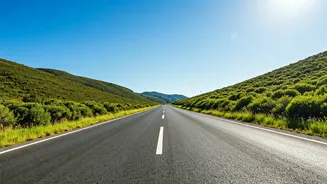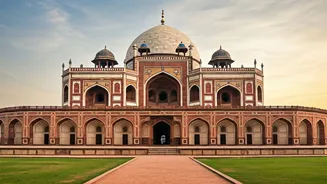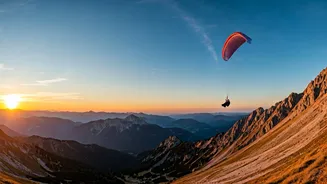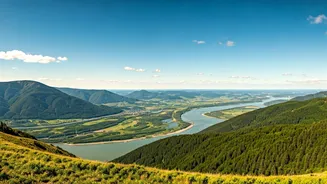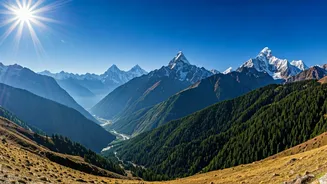Planning Your Adventure
Before setting off on your incredible road trip, meticulous planning is essential. First, decide on your route. India offers many options: the Golden Triangle,
the scenic coastal routes of the South, or the mountainous landscapes of the North. Consider the time of year; the weather greatly impacts driving conditions. Summer can be scorching, while monsoons bring heavy rains. Next, check your vehicle. Ensure it's in top condition with a recent service, including checks of tires, brakes, and fluids. Carry necessary spare parts and tools for minor repairs. Obtain all required documents, including your driver's license, vehicle registration, and insurance. Lastly, plan your accommodation. You can choose from hotels, guesthouses, or even campsites along the way. Booking in advance is recommended, especially during peak seasons.
The Golden Triangle Route
The Golden Triangle is a classic choice for a reason. This route typically includes Delhi, Agra, and Jaipur, each offering a unique cultural experience. Starting in Delhi, explore historical sites such as the Red Fort and India Gate. Then, head to Agra to witness the Taj Mahal, one of the world's most iconic monuments. The drive between Delhi and Agra can take around 3-4 hours, depending on traffic. Jaipur, the Pink City, is known for its forts, palaces, and vibrant markets. The Amber Fort, City Palace, and Hawa Mahal are must-visit locations. Driving between Agra and Jaipur takes approximately 4-5 hours. Throughout the Golden Triangle, be prepared for diverse traffic conditions, from congested city roads to highways. Always stay vigilant and follow traffic rules.
Southern Coastal Drives
The southern coast of India offers a different kind of road trip, combining scenic beauty with cultural experiences. One popular route could begin in Mumbai and travel southwards along the coast. The drive offers stunning views of the Arabian Sea. Consider exploring Goa, known for its beaches and vibrant nightlife. Further south, you could visit Kerala, with its backwaters, tea plantations, and stunning coastline. The drive along the coast allows you to enjoy fresh seafood and experience the relaxed pace of life. Remember to pack light clothing, swimwear, and sunscreen, as the weather is generally warm and humid. Road conditions can vary, so ensure your vehicle is well-maintained to handle diverse terrains. Plan your stops to include beaches, historic sites, and local eateries to maximize your trip's value.
Northern Mountain Roads
For those seeking adventure, a road trip through the northern mountains is an amazing choice. The Himalayas offer breathtaking scenery and challenging drives. Popular routes include journeys to Leh-Ladakh, Himachal Pradesh, or Uttarakhand. The roads are often narrow and winding, with high altitude. Before you go, ensure your vehicle can handle these conditions. A 4x4 vehicle is often recommended. Also, check for road closures due to landslides or weather conditions. Acclimatization to high altitudes is crucial. Allow your body time to adjust to the thinner air. Pack warm clothing, including layers, as temperatures can drop suddenly. Carry essentials such as a first-aid kit, extra fuel, and high-energy snacks. The journey is demanding but incredibly rewarding, filled with stunning landscapes and unforgettable experiences.
Essential Preparations
Preparation is key to ensuring your road trip is smooth and safe. Beyond vehicle maintenance, consider the following: pack a comprehensive first-aid kit and know basic first aid. Carry enough water and snacks, especially for long drives in remote areas. Plan your route, including potential stops for fuel, food, and accommodation. Download offline maps and keep a physical map as a backup. Inform someone about your travel plans, including your route and expected return date. Be aware of local laws and customs in different states. Always carry valid identification documents. Learn a few basic phrases in the local language for easy communication. Regularly check your vehicle's condition during the trip, especially tire pressure. And finally, stay connected by having a reliable internet connection or a satellite phone for emergencies.
Safety First Always
Road safety is extremely important. Always follow traffic rules and regulations. Avoid driving under the influence of alcohol or drugs. Ensure everyone in the vehicle wears seatbelts. Take regular breaks to avoid fatigue. Over long distances, it’s best to swap drivers to avoid exhaustion. Drive at a safe speed, especially on unfamiliar roads. Be aware of local driving habits, which can vary across regions. Be extra cautious while driving at night or in adverse weather conditions, such as rain or fog. Be respectful of other road users, and yield to pedestrians and cyclists. Be cautious in areas with wildlife. If you encounter an accident, assist immediately and contact the authorities. Remember, a safe road trip is a memorable one.
Accommodation Tips
Choosing the right accommodation can greatly improve your road trip experience. Book your accommodation in advance, especially during peak travel seasons, to secure the best options. Consider different types of accommodation based on your budget and preferences. Hotels, guesthouses, homestays, and campsites are all viable options. Read reviews to get an idea of the quality and location. When booking, check for amenities such as parking, Wi-Fi, and breakfast. If you are on a budget, look for guesthouses or homestays. These options often provide a more authentic local experience. For those who enjoy the outdoors, campsites can offer a unique experience. However, camping requires careful planning, including the right gear. Be prepared to adapt and be flexible with your plans, as unexpected events might require adjustments.
Embrace the Journey
Road trips are not just about reaching your destination; they're about enjoying the journey. Take your time, and don't rush. Stop at roadside attractions, local eateries, and scenic viewpoints along the way. Interact with the local community. Try local food, and discover hidden gems. Take lots of photos and videos to capture your memories. Be open to unexpected detours and spontaneous adventures. Pack a travel journal to jot down your thoughts and experiences. Listen to local music or audiobooks to make your journey more immersive. Remember to switch off your phone or social media to truly disconnect and connect with the experience. Most importantly, embrace the spontaneity and the freedom of the open road.
